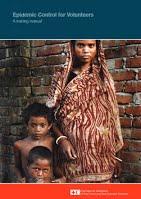Guidance material
Guidebook on Creating Resilience Networks: American Red Cross

The Community Resilience Strategy (CRS) is designed to guide American Red Cross domestic staff in engaging their communities to work collaboratively to enhance community resilience
and preparedness. The development of the strategy began with an in-depth look at
the most recent academic research and practical applications of resilience work, both
domestically and internationally. A group of Red Cross staff from across the country
then convened to develop the process that would become the CRS.
The ultimate goal of the CRS is to empower communities to build resilience for the next
disaster. A resilient community—as defined by the Red Cross—is one that possesses the
physical, psychological, social and economic capacity to withstand, quickly adapt and
successfully recover from a disaster. In order to reach this goal, the strategy aims to
achieve three main objectives:
1. Foster ‘connected’ communities, in which linkages and relationships form
between and across sectors.
2. Promote ‘problem-solving’ communities, in which community stakeholders trust
one another and are able to work together to form solutions and take action.
3. Build ‘prepared’ communities, which have the capacity to prepare, respond and
recover for any type of disaster that might occur.
